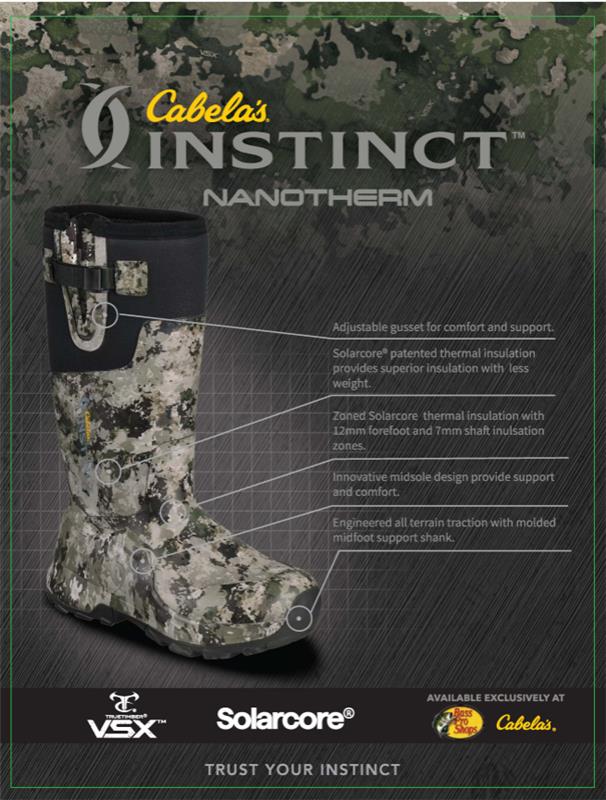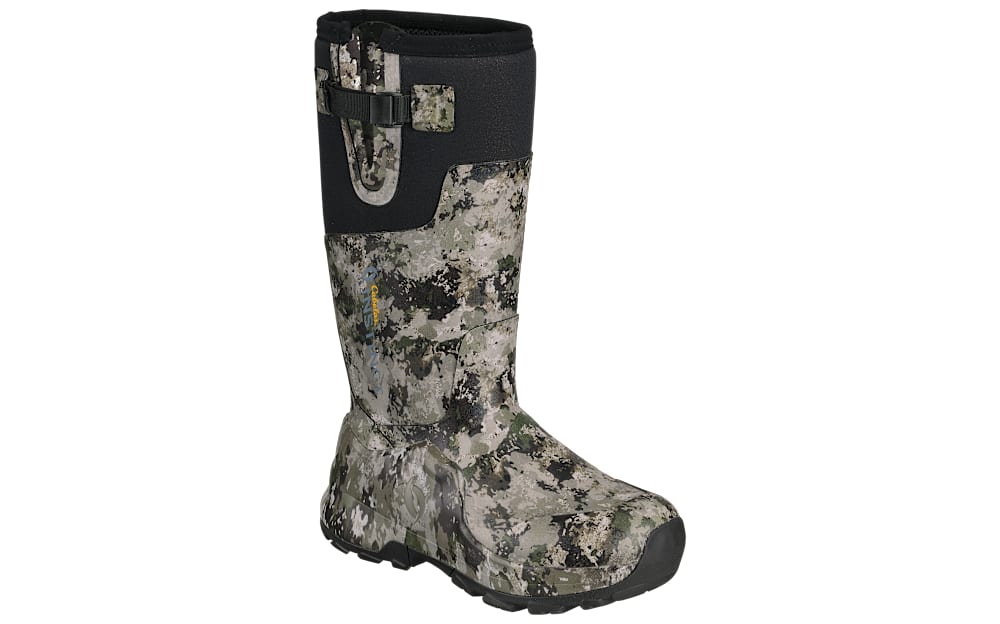
Introducing Nanotherm™: Cold-Weather Boot Innovation from Cabela's Instinct®
Winter conditions demand more than just rugged boots. You need warmth that lasts, protection that performs, and comfort that doesn’t quit. The new Cabela's Instinct® boots featuring Nanotherm™ insulation combine cutting-edge technology with field-ready design to keep your feet warm in freezing temps—without the weight or bulk of traditional insulation.
What Is Nanotherm™ Insulation?
Nanotherm™ is a proprietary thermal insulation technology that uses ultra-fine fibers and advanced layering to trap heat more efficiently than standard insulation.
Rather than simply stuffing a boot full of padding, Nanotherm focuses on:
- Thermal reflection: Retains body heat while releasing moisture
- Breathability: Reduces sweat buildup and helps regulate temperature
- Lightweight performance: Warmth without sacrificing mobility
This insulation is ideal for active outdoor use in frigid conditions. Whether you're ice fishing, hunting in deep snow, or walking frozen trails, Nanotherm keeps your feet comfortable from sunrise to sundown.

The Boot Behind the Technology
While Nanotherm insulation leads the innovation, the Cabela's Instinct® boot design supports cold-weather performance from all angles.
Key Features:
- Rugged outsoles for grip on snow and ice
- High ankle support and secure lacing for stability
- Reinforced waterproof materials to block moisture
- Comfort-fit insole for long treks and low-temp movement
These boots aren’t just designed to keep your feet warm—they’re built for serious winter terrain. From frozen fields to icy boat launches, they’re designed to work where you do.
Best Use Cases for Nanotherm Boots
These boots are ideal for:
- Ice fishing expeditions
- Cold-weather hunting trips
- Snow-covered trail hikes
- Outdoor work in freezing temps
- Winter camping and bushcraft
Nanotherm’s high-performance insulation makes it easier to stay outdoors longer, especially when paired with merino socks or a moisture-wicking liner.

Cabela's Instinct Nanotherm Insulated Rubber Hunting Boots for Men
- NASA-inspired SolarCore Aerogel Insulation
- Moisture-wicking air mesh linings
- 100% waterproof uppers
- High-rebound EVA midsoles
- Lightweight TPU shanks
What Outdoor Enthusiasts Are Saying
“These boots held their own during a Montana elk hunt in deep snow. Lightweight, shockingly warm, and my feet were dry the whole time.”
— Pro Staff Feedback
“The cold usually cuts my day short. These kept me warm on the ice for hours.”
— Verified Bass Pro Review
Nanotherm vs. Traditional Boot Insulation
| Feature | Nanotherm™ | Thinsulate™ / Primaloft™ |
|---|---|---|
| Weight | Lightweight | Medium to Heavy |
| Warmth-to-Weight Ratio | High | Moderate |
| Moisture Control | Excellent | Good |
| Dry Time | Fast | Slower |
| Compression Over Time | Minimal | May flatten with use |
How to Layer Nanotherm for Optimal Warmth
To maximize performance:
- Use wool or synthetic socks (avoid cotton)
- Add moisture-wicking liners if hiking all day
- Loosen laces during breaks to reduce heat loss
- Keep boots dry overnight by removing insoles
Layering your footwear correctly is just as important as insulation itself. Nanotherm is designed to complement proper layering without overheating.
Frequently Asked Questions
What is Nanotherm insulation?
Nanotherm is an advanced synthetic insulation that traps heat using layered fiber technology. It offers high warmth-to-weight performance and dries faster than traditional fills.
How do Nanotherm boots compare to Thinsulate or Primaloft?
They provide similar or greater warmth with less bulk and faster drying times, making them ideal for active winter use.
Are Nanotherm boots waterproof?
Yes. The boots are fully waterproof with sealed seams and moisture-wicking liners to keep your feet dry from the outside in and inside out.
Do these boots work for ice fishing and snow?
Absolutely. Nanotherm is specifically engineered for sub-zero conditions, frozen ground, and long exposure to cold.
Are they too warm for milder winter days?
They’re breathable enough for 30–50°F range hikes but excel in temps below freezing.
- 484 views

